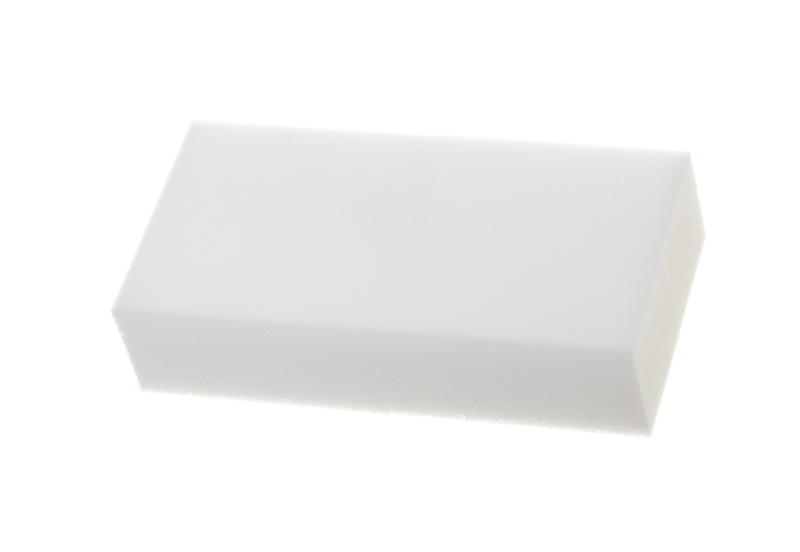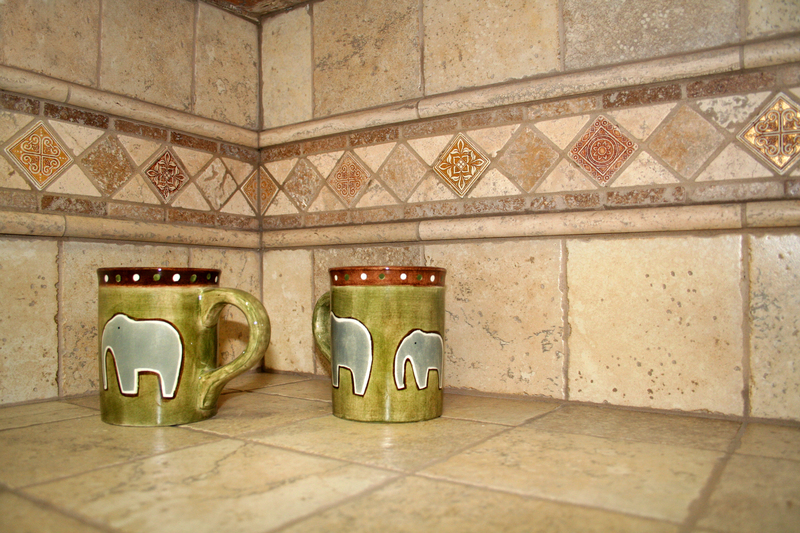The Science Behind Washing Velvet Curtains and Keeping Them Stunning
Posted on 16/06/2025
The Science Behind Washing Velvet Curtains and Keeping Them Stunning
If you cherish the rich, luxurious look of velvet curtains in your home, you're not alone. Velvet has been prized for centuries for its texture, shine, and sumptuous feel. However, over time, even the most beautiful velvet drapes can lose their luster if not cared for properly. So, what's the real science behind washing velvet curtains and maintaining their stunning appearance? Let's dive into the mechanics of velvet fabric care and learn the best methods for keeping your window dressings looking glamorous year after year.
Understanding Velvet Fabric: The Basics
To properly care for velvet curtains, we must first understand what makes velvet unique. Velvet is a woven fabric featuring a dense pile of evenly cut fibers, positioned so they stand up and give the material its distinctive texture and sheen. The pile reflects light in different ways, giving velvet its signature luxurious look.
Types of Velvet Fibers
- Silk Velvet: The most expensive, extremely delicate, with a radiant, glossy finish.
- Cotton Velvet: Soft with a deep pile, but less shiny than silk velvet and generally more robust.
- Synthetic Velvet (Polyester, Rayon, or Nylon blends): More affordable and durable, but may be less breathable and have varying shine.
Each velvet type demands a slightly different approach for washing velvet curtains.

Common Myths About Washing Velvet Drapes
- Myth 1: Velvet can only be dry-cleaned. Not always true! Some modern velvets can be carefully washed at home.
- Myth 2: All moisture ruins velvet. Incorrect. Controlled washing and drying methods are safe for certain velvet types.
- Myth 3: Cleaning flattens the velvet pile permanently. False, if correct techniques are used.
Understanding these myths puts you on the right track for proper velvet curtain maintenance.
The Science of Velvet: Why Washing Methods Matter
The texture and shine of velvet curtains depend on the integrity of their pile, the vertical fibers that create velvet's unique feel. When subjected to moisture, heat, or friction, these fibers can mat down, shrink, or distort.
What Happens When You Wash Velvet?
- Fiber swelling: Water causes velvet piles to swell, which increases weight and can distort the structure if not supported properly.
- Color migration: Velvet is prone to dye bleeding, particularly in silk and cotton blends.
- Pile matting: Agitation or improper drying flattens the pile, diminishing velvet's shine.
Therefore, understanding the material's chemistry is essential for effective velvet drape care.
How to Wash Velvet Curtains Safely
Follow this step-by-step guide to cleaning your velvet drapes while preserving their beauty:
Step 1: Read the Care Label!
This might sound obvious, but always start by reading the manufacturer's cleaning instructions on your velvet curtain. If it says dry clean only, avoid home washing without expert advice.
Step 2: Remove Dust and Debris
- Use a handheld vacuum with a soft brush attachment in a gentle downward motion to remove surface dust. Always move with the direction of the pile.
- For embedded debris, try shaking the curtains outdoors before further cleaning.
Step 3: Spot Testing is Key
Choose an inconspicuous corner and test your cleaning method to check for colorfastness and pile reaction.
Step 4: Choosing the Right Washing Method
Your approach depends on the velvet fabric type:
- Machine-Washable Velvet: Use cold water, delicate cycle, and a mild detergent. Place curtains in a mesh laundry bag (if possible) to reduce abrasion.
- Handwashing Velvet: Fill a bathtub or basin with cool water and a gentle, pH-neutral soap. Gently swish the curtain; avoid wringing or twisting.
- Spot-Cleaning: For stains or spills, blot gently with a damp sponge and mild detergent. Never rub the stain or pile.
- Dry Clean Only: Take your velvet curtains to a trusted professional.
How to Dry Velvet Curtains Correctly
Proper drying is as important as proper washing of velvet curtains. Incorrect drying can flatten or shrink the pile irreversibly.
- Never use a tumble dryer! The heat and tumbling action destroy velvet's structure.
- Air dry flat: Lay the curtains flat on a clean, absorbent towel. Reshape gently and smooth out any wrinkles in the direction of the pile.
- Hang to dry: If space is short, hang the velvet curtains back on the rod, ensuring no overlapping and that they hang freely.
- Avoid direct sunlight: Sun can fade the rich dyes of velvet.
The Pile "Recovery" Trick
If areas of pile are crushed after washing and drying, you can gently restore them:
- While slightly damp, use a steamer (not an iron!) to fluff the pile, brushing lightly with a soft-bristled clothes brush.
- For stubborn flatness, hold the steamer about 1-2 inches away and brush the pile upwards.
Deep Cleaning: When to Call the Pros
If your velvet drapes have severe stains, damage, or are vintage/antique (especially silk velvet), it's safest to trust a professional curtain cleaner. Professionals use specific solvents and machinery designed for delicate textiles. They can also re-block curtains, restoring their shape and length if there's been any shrinkage or distortion.
Signs Velvet Curtains Need Professional Cleaning:
- Persistent odors or water stains
- Heavily soiled hems or linings
- Fading, patchiness, or texture change post-home cleaning
Maintaining Velvet Curtains Between Washings
Good velvet curtain care goes beyond occasional cleaning. Here's how to prevent dirt, fading, and pile crushing day to day:
1. Weekly Dusting
- Soft vacuum brush or gentle shake outdoors keeps dust at bay.
2. Manage Sun Exposure
- Install sheer panels behind velvet drapes to filter direct sunlight and prevent color fading.
3. Humidity Control
- Use a dehumidifier in very damp climates, as excessive humidity encourages mold on velvet's natural fibers.
4. Handling Spills Promptly
- Blot (don't rub) with a clean, dry cloth.
- If needed, a damp cloth with a touch of mild detergent can be used, always blotting up excess moisture.
Common Mistakes to Avoid with Velvet Curtain Cleaning
- Using hot water or harsh chemicals: These can cause shrinkage and damage.
- Excessive agitation: Rubbing or wringing distorts the plush pile.
- Direct ironing: Heat flattens and permanently scars velvet's surface.
- Soaking for too long: Extended exposure to water weakens fibers and can lead to color bleed.
The Chemistry Behind Gentle Detergents for Velvet Care
Why choose pH-neutral or mild detergents when washing velvet curtains? Harsh, alkaline cleaners strip dyes and degrade the natural oils that make velvet soft and lustrous. Gentle detergents support the fabric's chemistry and reduce risk of dye bleeding, fiber breakage, and loss of shine. Avoid optical brighteners, bleaches, and fabric softeners--they do more harm than good on velvet.
How Often Should You Wash Velvet Curtains?
The science-backed answer is: only as often as needed. Excessive cleaning accelerates wear, so strive for every 1-2 years in normal conditions. Always spot-clean marks and vacuum regularly to extend time between washings. If you live in a dusty or high-traffic area, more frequent light cleaning is warranted.
Tips for Keeping Velvet Curtains Stunning Long-Term
- Rotate curtains every few months if sunlight is uneven, to prevent one side fading or wearing faster.
- Store unused velvet curtains flat or loosely rolled in a cotton sheet, away from plastic bags and direct sunlight.
- Check hardware. Sharp rods and rings can snag the pile--opt for smooth, rounded fixtures.
- Invest in linings. Curtain linings reduce dust accumulation and block damaging UV rays.
Eco-Friendly Velvet Curtain Washing: A Brief Note
Concerned about the environment? Wash velvet drapes in cold water to cut energy costs. Select eco-certified, biodegradable detergents and air dry. Handwashing uses less water and is gentler on both fabric fibers and the planet.

Frequently Asked Questions About Washing Velvet Curtains
Can I steam clean velvet curtains?
Yes, steaming is excellent for refreshing the pile and removing light wrinkles, but avoid excessive moisture. For deep cleaning, regular washing or professional care is best.
What should I do if my velvet curtains shrink after washing?
Lay them flat while still damp and gently stretch back to original size. Professional pressing may be needed for severe cases.
Is it safe to use homemade cleaners on velvet?
Certain homemade solutions like diluted white vinegar are too acidic and can harm velvet. Always use a mild, fabric-safe product or consult a professional.
In Summary: The Science Behind Washing Velvet Curtains
- Know your velvet type: Silk, cotton, or synthetic dictates your cleaning method.
- Gentle treatment preserves velvet's pile, color, and luxury feel.
- Always air dry and avoid heat.
- Regular dusting and smart sun protection keep velvet stunning longer.
- When in doubt, trust a professional.
Understanding the science behind washing velvet curtains isn't just about following steps; it's about respecting the unique chemistry and structure of this beautiful textile. Proper care helps your velvet drapes remain a dramatic, glamorous focal point in your space for years to come.
With these expert, science-supported techniques, you'll keep your velvet curtains looking stunning, adding luxury and refinement to your home in every season. Happy cleaning!





